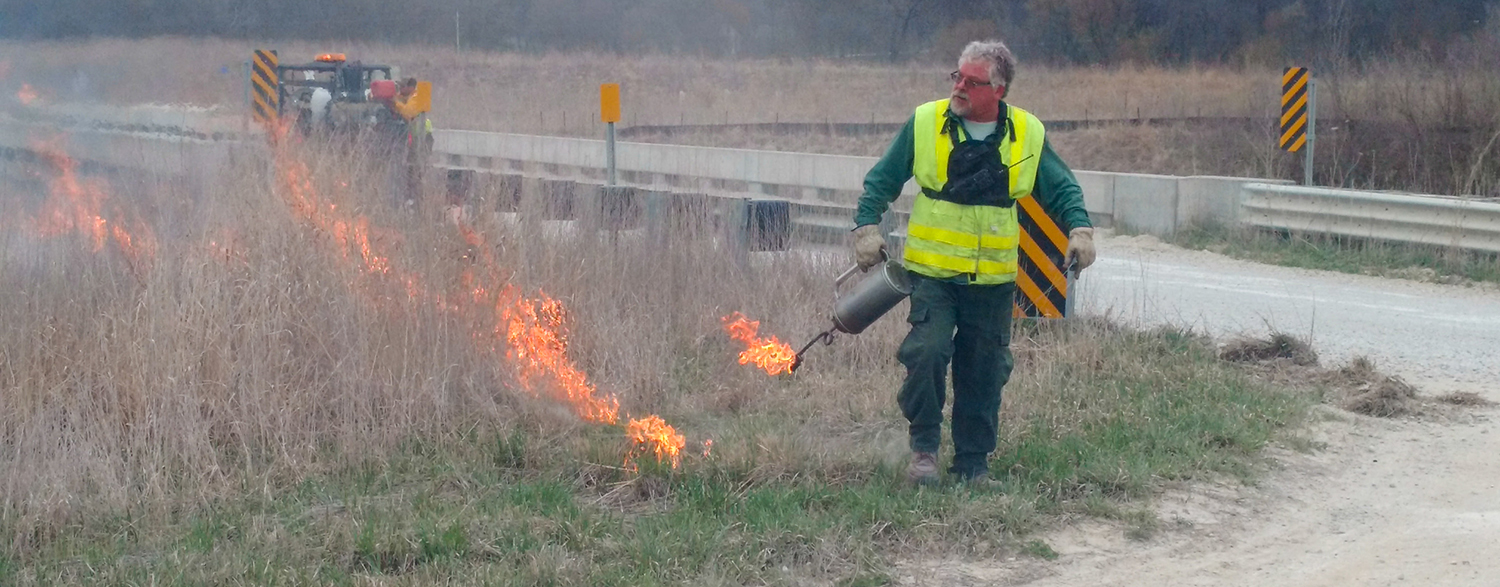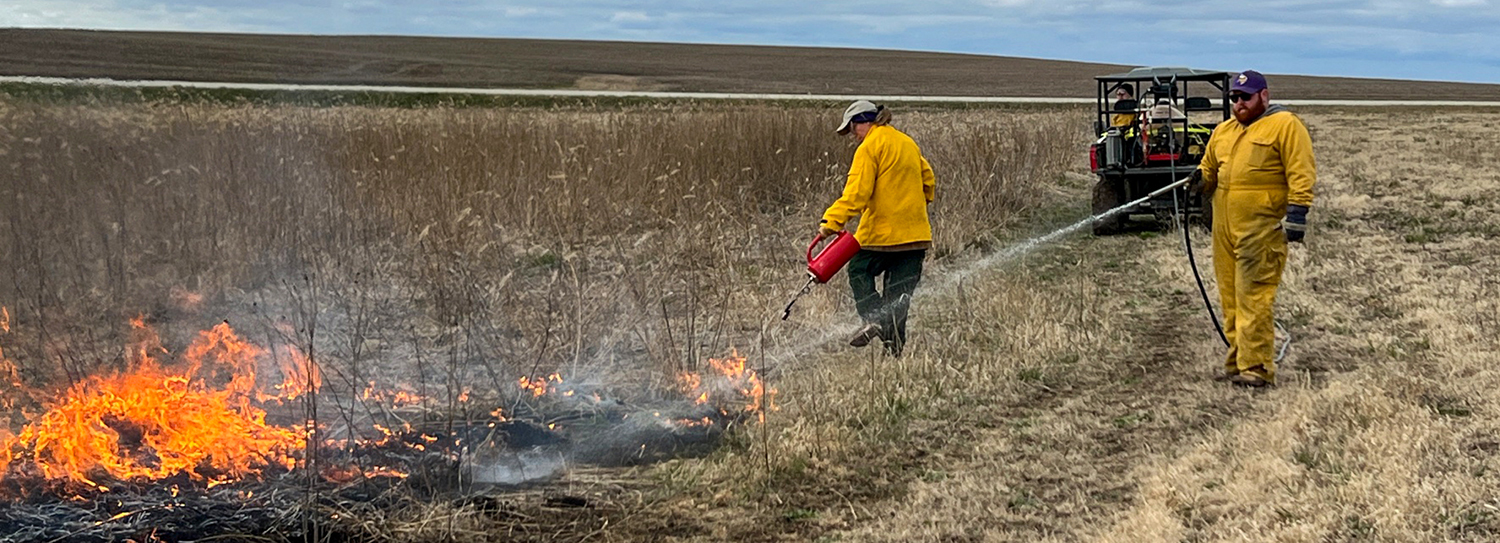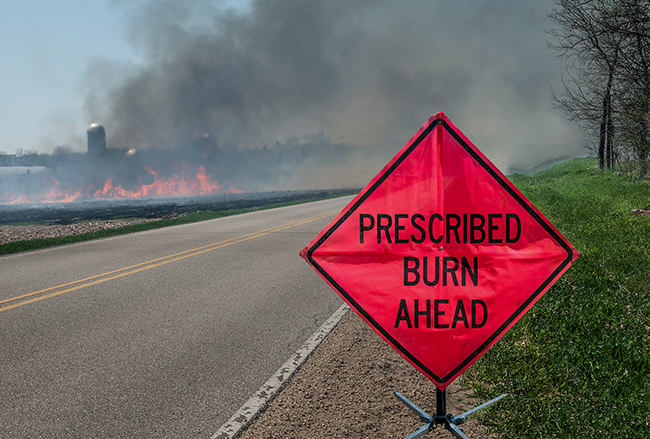Ignition, Fire Fighting, and Other Safety Equipment
Table of Contents

All ignition and fire-fighting equipment should be inventoried, inspected, and tested prior to the burn season and immediately before each burn.
Refer to the LRTF Funding Guidelines for details on which equipment is eligible for purchase via grant funding and the ordering procedures. Much of the equipment needed for prescribed burning can be purchased from vendors such as those listed below.
Ignition Tools
Drip torches are the most efficient tool for igniting prescribed burns.
Inventory
- two drip torches containing a 2:1:1 diesel/kerosene/gasoline mix or, if kerosene can’t be found, a 2:1 diesel/gasoline mix
- pre-mixed fuel in safety cans
- lighters
Hand Tools
Hand tools are used to remove combustible materials and smother fire. They are often used to create fire lines and mop up after the burn.
Inventory
- rubber flappers (similar to a rake but with flat or bristled rubber on the head used to swat out flames or embers)
- shovels
- fire rakes
- gas-powered blowers
- fire brooms
Water Supply

Numerous styles of water tanks and pumping systems are effective for roadside burns. Some systems are designed specifically for fire suppression while others can also be used for additional management practices such as herbicide application. Additional features such as fire resistant hosing, electric hose reels, and adjustable pattern spray guns improve the effectiveness of the rig.
Tractors and ATVs can also be equipped with tanks and water pumping systems. These rigs can quickly access locations that may be inaccessible to larger equipment. They have smaller tank capacities, but can move personnel and equipment more efficiently along the fire line.
Inventory
- ¾- to 1-ton truck equipped with a 300–400 gallon tank and pump
- tractor and/or ATV equipped with 50–100 gallon tank and pump
- backpack pump sprayers
- additional storage tank or trash pump to refill equipment
Communication Devices
Effective communication with the burn crew during a prescribed fire is crucial. It is also important to maintain a communication link with agency headquarters and local authorities before, during, and after a burn.
Inventory
- two-way radios
- cell phones
Weather Data Collection Devices
Weather data must be collected to ensure conditions are within the parameters of the burn plan. Handheld weather units are inexpensive, accurate, and the most effective means of monitoring on-site weather conditions. Hourly weather observations are also available from the National Weather Service for specific areas.
Signage and Traffic Control Devices

The use of warning signs and other traffic control devices is highly recommended. The extent of the warning measures needed depends on the impact on traffic flow and the difficulty of the burn.
Inventory
- warning signs reading “Prescribed Burn Ahead” or similar
- vehicles with flashing lights
- flaggers


